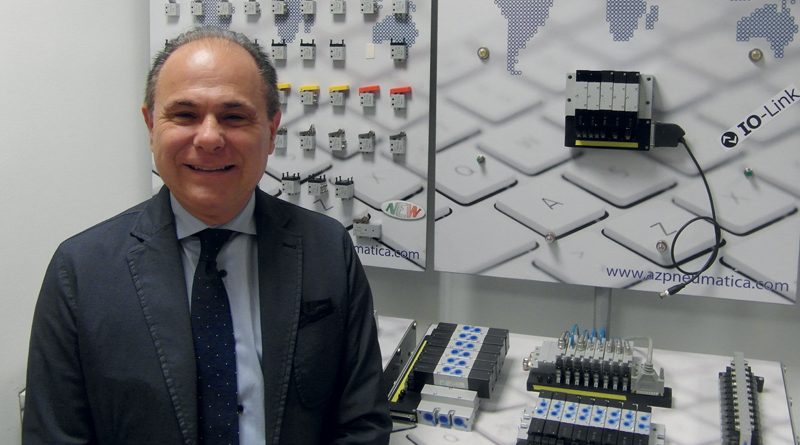Special by Definition
It isn’t always easy for a company to find its market position. Those who succeed, on the other hand, often also find the key to growth. 36 years on from company foundation, AZ Pneumatica is now a mature firm whose success is built on special component development with integration of existing components. We met up with Sales & Marketing Manager, Daniele Minuzzo.
by Fabrizio Dalle Nogare
Since being founded in 1982, AZ Pneumatica has been an ever present in the complex world of the pneumatic industry. What makes you stand out from the competition?
Naturally, AZ Pneumatica has a vast catalogue of standard products, the range that makes up the lion’s share of our sales. However, we also have a 25-30% customized production segment, components designed in house that meet the specific needs of the client. We often start by looking at the catalogue range, which, when integrated with made to measure solutions, create just the right mix the client was looking for. This is particularly relevant, although not exclusive, to the Italian market where we can achieve direct dialogue with distributors and OEMs.
Where does this customization originate? Does this represent one of the factors leading to the company’s growth over the decades?
For sure this is a product of the know-how, unique in certain regards, that we have built up over time, whether that be in the technical office, in production or through strategic decisions, taken in the past, now bearing fruit. An example of this being focusing on clients requiring very specific components, especially in terms of reliability. While it is true that we are relatively small, compared to some of our competitors, I like to think that AZ Pneumatica is a beehive of technology, founded on avant-garde production processes.
What production processes in particular are you referring to?
Valve assembly is a good example, it is automated thanks to specialized machinery that has been developed together with our suppliers, guaranteeing flexibility and full monitoring of process. From this perspective, we can consider ourselves forerunners of the Industry 4.0 concept. The recession of 2008 meant we needed to be not only at pace with national competitors but global ones too. Automation was the only way to do this. Fortunately, the owners have always had the mentality to strive for the future and this was the base for the projects the market now seeks.
Speaking of the market, do you believe there has been growth since the introduction of the Industry 4.0 plan?
Without a doubt! The sector hopes such incentives will still be available in the future. Here in Italy we had spent too long fudging over large scale investment. All plans need to consider the medium term as certain types of machinery can require two years to develop.
From the technological point of view, are we experiencing a moment of change for pneumatics? How is AZ Pneumatica positioned in this ground changing period?
Following market forces, including changes in technology, is fundamental. We are developing a number of components featuring integrated electronics like the multi-connection IO-Link version, presented at the last SPS Italia trade fair. Pneumatic components, that can be integrated into practically every type of machinery, represent the best solution for on/off automation. Compressed air management, on the other hand, is not simple: this means that companies like us have an advantage thanks to their high level of specialization leading to swift solutions to clients’ needs. Still on the subject of technology, pneumatics has shown it is capable of co-habiting with electronic systems, so much so, that pneumatic component sales has now exceeded pre financial crash levels. Requirements for automation are constantly growing and there is still plenty of room for more technology.
This obviously has an effect on your product range. Which are the most important developments in this area?
We are strictly linked to the requirements of Industry 4.0, such as sensors inside traditional components like valves in order to check correct spool movement or integrating the IO-Link system into certain components.Client needs right now tend to focus on factors like component size, flexibility and standardization, thanks to the implementation of the IO-Link standard. Looking at integrated products, customization remains the key factor.
Is the application sphere of your products also in evolution?
The financial crash meant we had to completely change our approach to the market: from a sector focused strategy to the wider scope we now employ.
Our ambition is to manufacture for an ever increasing range of application: packaging, plastics, assembly machinery, machine tools, automotive, aluminium machinery, wood working etc. Compared to the pre-recession period, the number of clients we work with has practically doubled.

